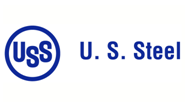Steel Mills

A Contract Pendulum Swing Could Impact Mill Order Books
Written by John Packard
October 13, 2013
The following is an email we received from a service center executive regarding the current contract negotiations and their opinion as to how changes can change the mix of contracts to spot orders on with a mill and, price volatility in the marketplace. We have heard the same argument from others within the steel industry who believe the changes being requested by the domestic steel mills will create more volatility in the spot markets.
The pendulum has moved back and forth over the years, with the mills sometimes having majority contracts/lower spot books to sometimes having majority spot books/lower contracts. While the mills may be convinced (wrongly I believe) that the Index based pricing has been detrimental to their bottom lines, there likely were many benefits that came about as a result of the index model:
The market moved into one of the most stable periods in recent times. Efficiencies increased, predictive volumes allowed mills to plan and execute production better, mill on-time deliveries improved dramatically, end-users and service centers were able to reduce inventories since they were buying regular amounts each month. The need/want to take on speculative physical volumes to protect against a wild move up in price shrank away. As a result, volatility reduced significantly, and pricing became more stable – relative to the recent past.
And to the mills’ point that the Index-based model is negative for their bottom lines, mills (especially EAF producers) are making very good returns right now – with the Index-model very much still in place. Why is that? Oh, because fundamentals always dictate price: demand is steady, inventories are low, production was lost due to outages, and imports were relatively low. So, supply went down, demand held steady, and presto! Prices rose!
If the pendulum swings back to mills having majority Spot order books, they still won’t be able to control the price, but we will likely see a return to higher volatility, with bigger moves up and down, lost efficiencies, etc.
Steel Market Update welcomes your thoughts on the subject. You can email them to: John@SteelMarketUpdate.com

John Packard
Read more from John PackardLatest in Steel Mills

CRU: Tata Steel looks to shed 1,600 jobs in the Netherlands
The company said, “The challenging demand conditions in Europe driven by geopolitical developments, trade and supply chain disruptions and escalating energy costs have affected the operating costs and financial performance."

Reports: Federal funding for Cliffs’ project could be slashed
Elon Musk's DOGE is determining which Department of Energy grants to advance and which ones to terminate, according to several media outlets

Trump still against selling USS to Japanese firm: Report
Despite ordering a new review of Nippon Steel’s bid for U.S. Steel, President Trump said he is still against selling USS to a Japanese company, according to media reports.

Algoma looks to sell more steel in Canada in wake of Trump’s tariffs
The Canadian steelmaker said its absorbing higher tariffs as it moves forward.

Ancora abandons plan to take over leadership of USS
Investment firm Ancora Holdings Group has halted its play for U.S. Steel's board, citing Nippon Steel’s proposed bid for USS “gaining momentum.”
